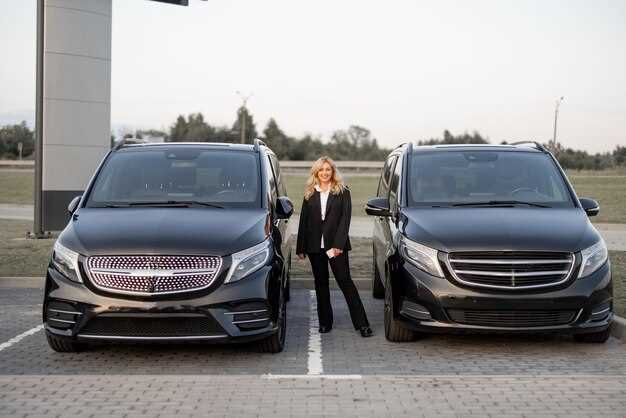Compact vs full-size cars – what’s best for city driving?


In today’s fast-paced urban environment, the choice of the right car can significantly impact daily commuting experiences. With the rise of city living, drivers are faced with the crucial decision of selecting between compact and full-size vehicles. Each size offers distinct advantages and challenges that cater to varied urban lifestyles.
Compact cars, known for their agility and ease of maneuverability, often excel in navigating congested streets and tight parking situations. Their smaller size makes them a popular choice for city dwellers who prioritize efficiency and cost-effective driving. On the other hand, full-size cars provide more space and comfort, catering to those who value roominess and enhanced driving experience, even in an urban setting.
This article delves into a comprehensive comparison of compact and full-size cars, examining key factors such as fuel efficiency, parking convenience, and overall urban adaptability. By analyzing these aspects, we aim to guide drivers in making informed choices that best suit their needs and enhance their urban mobility.
Parking Ease: Compact vs. Full-Size Cars

When it comes to urban driving, parking can be one of the most significant challenges for car owners. The size of the vehicle plays a crucial role in how easily it can be parked. Compact cars, with their smaller dimensions, are generally more maneuverable and easier to fit into tight parking spaces. This is especially beneficial in densely populated areas where parking spots are limited.
In contrast, full-size cars, while providing more comfort and interior space, often struggle to find adequate parking spots in urban environments. Their larger footprint makes it difficult to navigate through narrow streets and into compact parking spaces. As a result, drivers of full-size cars may spend more time searching for suitable parking or may have to resort to less convenient options, such as parking further away from their destination.
Compact cars offer several advantages regarding parking ease. Their smaller size allows for greater flexibility and the ability to park in spots that might be inaccessible to larger vehicles. Furthermore, many cities are increasingly implementing compact car parking zones, which typically offer lower fees and more availability compared to standard parking spaces reserved for full-size cars.
On the other hand, full-size cars can present challenges despite their many amenities. While they provide a more spacious driving and riding experience, the trade-off often comes in the form of difficulty when parking. Additionally, they may require larger turning radii, making it tricky to maneuver in tight quarters. In an urban setting where space is at a premium, these disadvantages become more pronounced.
Ultimately, the choice between compact and full-size cars for urban driving largely boils down to individual needs and preferences. For those prioritizing convenience and parking ease, compact cars are likely the better option. However, for those who value space and comfort, full-size cars may still be a preferred choice–provided they are willing to navigate the associated parking challenges.
Fuel Efficiency: Which Car Size Saves More in the City?
When it comes to urban driving, fuel efficiency is a crucial factor to consider, as cities are often characterized by frequent stops, traffic congestion, and short trips. Compact cars, designed for maneuverability in tight spaces, typically offer better fuel efficiency compared to full-size vehicles. This is largely due to their smaller engines and lighter weight, which require less energy to operate.
In urban environments, compact cars can easily navigate through traffic, making them an efficient option for city dwellers. These vehicles often incorporate advanced technologies aimed at maximizing fuel economy, further enhancing their efficiency during stop-and-go driving conditions prevalent in urban settings.
Full-size cars, while offering more space and comfort, tend to have larger engines that consume more fuel, especially in city driving scenarios. Their size can also lead to decreased efficiency due to the increased aerodynamics and weight, which can negatively impact mileage. The larger fuel tanks may seem advantageous for long trips, but they do not compensate for the higher consumption in urban driving.
Ultimately, for those prioritizing fuel savings in city conditions, compact cars generally outperform their full-size counterparts. Their design and engineering are tailored to meet the demands of urban driving, allowing drivers to save on fuel costs while enjoying the benefits of smaller vehicle dimensions.
Driver Comfort and Visibility in Urban Environments

When considering a car for urban driving, driver comfort and visibility are paramount factors that significantly impact the overall experience. Compact cars, designed for maneuverability, often provide enhanced comfort due to their smaller size, allowing easy navigation through tight spaces and heavy traffic. The proximity to controls and features in these vehicles can create a more intimate driving environment, allowing the driver to focus on the urban landscape without undue strain.
Visibility plays a critical role in urban settings, where pedestrians, cyclists, and environmental obstacles abound. Compact cars typically have a lower stance, providing unique perspectives on the road. This height can enhance the driver’s ability to quickly assess their surroundings, contributing to safer driving practices. However, while compact cars excel in agility, full-size cars can offer larger windows and higher seating positions that improve all-around visibility. This can help drivers identify potential hazards from a greater distance, which is essential in bustling city environments.
Moreover, the size of the car affects driver sightlines and awareness. Full-size cars may provide a more commanding view of the road, but they can also make navigation through congested urban areas more challenging due to their bulk. Ultimately, the choice between a compact or full-size car hinges on personal preference regarding comfort and visibility. Drivers must assess their own comfort needs alongside the visibility requirements of urban driving to select the most suitable vehicle that enhances their overall driving experience.



